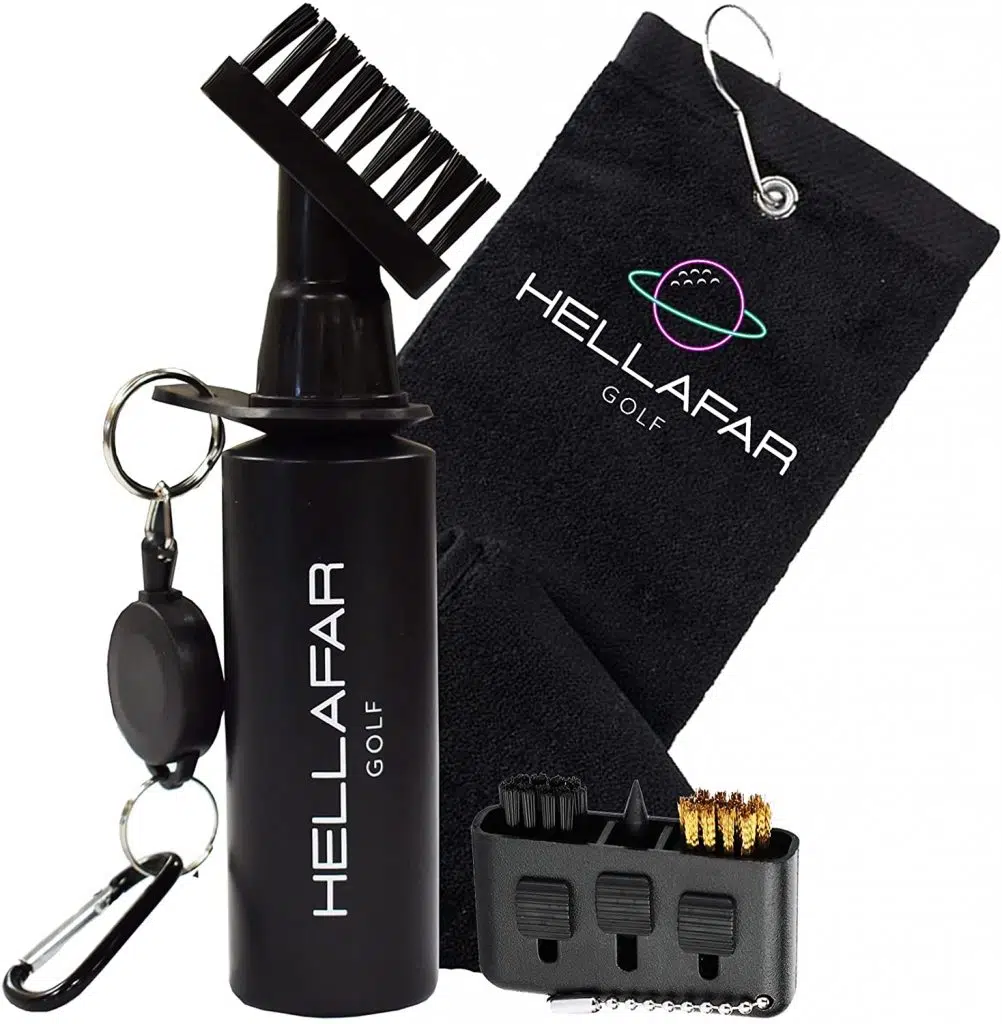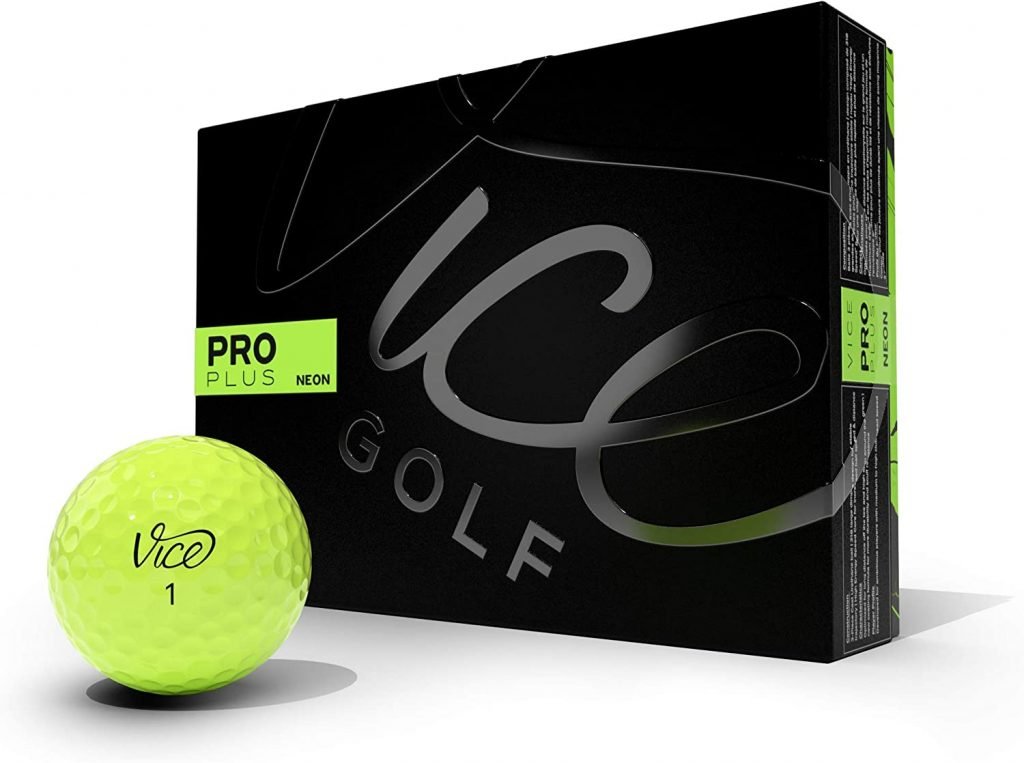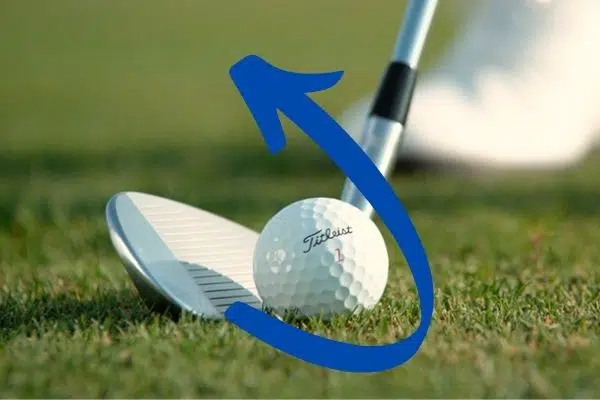One of the most exhilarating things to see when watching golf on TV is when the pros get that violent, ripping spin, especially on their wedge shots.
Nothing is quite as satisfying as seeing a shot which, at first, appears to land disappointingly long of the pin – making you think they had their yardage wrong – just for it to fizz back towards the stick and nestle in closely to the hole.
If all of this leads to the player pulling the ball back into the cup, as if on a string, for a hole in one: cue absolute pandemonium.
So, like many parts of golf when played at the pro level, why is this so hard to replicate for amateurs?
It feels like a massive achievement for a mid-to-high handicapper to get a pitching wedge to pull up within three metres or yards, let alone rip back several feet towards where the shot was played from.
And even if getting the ball to stop on a dime seems out of reach for me and other weekend warriors, how on earth do I at least stop my shots landing short of the green, only to roll through the back due to little to no spin?
To find a solution to my problems and start generating more spin on my wedges, I’ve scoured the internet to find the best tips and tricks and shared my learnings in this easy-to-read article that I hope will be helpful to you, too.
Table of contents
How do I get more backspin on my wedges?
To get more backspin on your wedge shots, it is vital that you have clean, sharp grooves and a dry clubface. As for technique, it is crucial that you strike down on the ball, but maintain as much loft as possible by reducing shaft lean, moving the ball forward in your stance and keeping the face open, while maintaining speed through contact.
In a nutshell, getting the ball to spin on the green with your wedges requires four key things: correct preparation, ball positioning, an open clubface and speed through impact.
Let’s break down these elements in more detail.
Step one: Preparation is key
Quite simply, too many golfers are lazy when it comes to the cleanliness and care of their golf clubs when on the course and playing a round.
The grooves on each club are there for a reason, and wedges like the Taylormade Hi Toe Milled Grind are stacked with them as they endeavour to push spin rates to new levels (I’ve written an article outlining the 23 best wedges available to buy today, which I’d definitely recommend you read).
However, it doesn’t matter how many grooves you have on your clubface if they are all covered in mud, or blunted after years of use.
Think of it this way: your driver and woods have no grooves to speak of. Why? Spin is kept desirably low on these clubs so that the ball travels farther and rolls out, rather than flying high into the air.
This is why you have to clean your grooves after every shot, so that they are able to impart the full level of friction on the ball every time.
It is this reason why you want your clubface to be dry too, as any water or moisture from grass on your clubface will reduce the friction imparted on the ball (this is particularly important when playing in wet conditions).
And if your grooves feel like they just don’t have the edge they once did, it might be worth exploring a groove sharpener to make sure they are crisply cut.
But before you buy one, make sure you read our guide on how to use groove sharpeners as it’s not always as straightforward as you might think.
Step two: Check your ball position
If the ball is too far back in your stance, this will promote shaft lean and a delofting of the club.
It is a bit confusing given most people are taught to position the ball mid-stance for the shorter clubs before moving it gradually closer to the front foot, but a high spinning wedge shot should actually be played a fraction forward of centre.
This will ensure that the shaft isn’t leaning way too far forward, and that the loft being delivered remains high.
This will assist the clubface to glide under, and spend more time in contact with, the ball, imparting maximum spin.
Just make sure that you resist the temptation to hit up – thinking this will help to get the ball high – as you may end up thinning the ball by delivering the leading edge, rather than the full face.
If you want more advice on ball position, read here.
Step three: Open your clubface
The clubface needs to stay relatively ‘open’ during contact to deliver high loft and impart spin.
Now, this doesn’t mean pointing it 45 degrees out to the right, like you would with a splash bunker shot, but it means avoiding the temptation to rotate the wrists through impact out of fear of blocking the ball.
If you are playing a super open-faced shot, opening your stance and aiming a little to the left will help the ball come out straight at the target.
Step four: Maintain speed through impact
Consider table tennis as an analogy – if you play a slicing, back spinning forehand, the faster you swing, the more aggressive the backspin on the ball will be.
The same applies to golf: swing faster and you’ll likely see more spin on the ball due to the friction created at contact.
The catch here is that speed only works if all the elements discussed above are maintained, so if swinging out of your boots causes your entire technique to break down, you may need to find a happy medium.
Check out our guide about how hard you should swing the club here.
If you want even more advice on how to get more backspin with your wedges, watch the below video from popular YouTube golf instructor Rick Shiels:
How do pros get so much backspin?
Golf pros spin the ball so much for several reasons, largely related to their strike. Pros make great contact with the ball the majority of the time, due to their swings being so well drilled and replicated. In addition to this, they always use the highest quality balls, meticulously clean their club between every shot and have high swing speeds.
A fantastic set of data from TrackMan Golf breaks down the tour average swing speeds for both male and female pros for each club. For the purpose of this article, lets look at the pitching wedge data in more detail.
Male pros hit their wedges, on average, with a swing speed of 83 miles per hour, with an attack angle of -5 degrees.
On the women’s tour, players swing at 70 miles per hour with a pitching wedge, but only -2.8 degrees down on the ball.
With a greater swing speed, male golfers can afford to strike the ball with a more negative attack angle and still get the high launch they desire. But how do these two factors – attack angle and swing speed – impact spin rates?
Male pros get around 9300 RPM on these pitching wedge shots, nearly 1000 more than their female counterparts.
Undoubtedly, greater swing speeds (and what this allows golfers to do with attack angle) have an impact on how much backspin can be achieved.
Golf balls are also one of the simplest things to tinker with to try and achieve more spin, second perhaps only to regular cleaning of your clubface.
Top of the range golf balls (as I’ve explained in another article) will generally be softer in feel and be more receptive on greens, increasingly likely to grip and perhaps even spin back with the shorter clubs.
Golf balls such as the Titleist Pro V1, Callaway Chrome Soft or TaylorMade TP5x are all top of the range models that, due to their urethane cover, will give you the greatest chance of achieving higher spin rates.
Why don’t my wedges spin back?
Your wedges might not spin back for several reasons: either you swing too slowly, you use poor quality golf balls, your clubhead is too closed or you fail to clean your clubface between strikes. Any of these elements, or a combination of them, may prevent backspin when using your wedges.
The simplest thing you can do to instantly improve your chances of spinning wedges backwards is cleaning your clubface after every use.
It is something so rarely done by amateur golfers, but is a simple ritual performed by every caddy on the pro tour, straight after each shot is made by their pro.
Now I know you don’t have a caddy, but this is no excuse given the range of simple and easy tools on the market that can help you crisp up those grooves in less than 10 seconds.
Consider investing in one of the options below:
Frogger Golf Brush Pro
Awarded best new product at the PGA Merchandise Show, the Frogger Golf Pro Brush attaches simply to your bag and can be easily manoeuvred by using the 2.5 foot retractable cord.
Containing both a bronze/nylon brush and a retractable groove cleaning spike, dust, dirt and grass will be safely removed with ease after every shot.

Hellefar Golf Club Cleaning Set
One of the most comprehensive kits on the market, the Hellefar Golf Club Cleaning Set contains a water bottle with brush, golf towel and 3-in-1 cleaning tool, leaving no stone unturned in club cleaning options.
All items will clip safely to your bag, with the water fed brush ideal for general cleaning purposes and the 3-in-1 tool ideal for dislodging stubborn grit and grime.
The Golfer’s Workshop Club Cleaning Spray
For extra stubborn grime or that six-monthly complete club clean, The Golfer’s Workshop Club Cleaning Spray is designed to work away at tough, built-up material whilst being perfectly safe on your clubs.
By removing deep grit barely seen by the eye, you’ll likely produce a more consistent trajectory and better spin rates. This spray is also suitable for grips, shafts and any part of the golf club.
Which golf ball has the most spin?
The highest spinning and overall best quality golf ball on the market is the Titleist Pro V1x. Other top of the range golf balls such as the Bridgestone BXS, the Srixon Z-Star XV and the less renowned Vice Pro+ all deliver high spin rates with lofted clubs, especially wedges.
It can be super tempting to cheap out on golf balls, given top of the range balls are nearly double the cost of a mid-range dozen.
However, you get what you pay for, and the balls discussed below really will spin a huge amount more than cheaper options.
Titleist Pro V1x
Undoubtedly the most popular golf ball in the game, the Titleist Pro V1x is the pinnacle of golfing performance.
Not only is it super long off the tee, but will offer some of the best grip – and backspin – around the greens.
Bridgestone Tour BXS
Tiger Woods is not only a partner of Bridgestone, but has helped them with the development of their golf balls in recent years; a perfect endorsement of their quality. The Bridgestone Tour BXS is certainly a testament to this.
If you’ve ever seen the way Tiger can stop a five-iron when it lands on the putting surface, you’ll understand just how effectively these balls can grip and hold greens.

Vice Pro+
Believe it or not, Vice Pro+ balls pretty much match Titleist Pro V1s in just about every performance category, including spin.
Now it isn’t easy pulling people away from a trusted brand like the Pro V1, but Vice balls may lay claim to being the coolest on the market.
Check out their ‘drip’ patterns if you like making a statement on the tee, and you may well be hooked with both their looks, and their performance.
Srixon Z-Star XV
Srixon have upped their golf ball tech game in recent years, with the Z-Star XV laying claim to a new ‘Spin Skin’, a durable coating with flexible molecular bonds.
Now what exactly this is I don’t know (the average person will probably ever understand), but what I do know is they achieve high spin rates at a price point attractively lower than some of the other big-name brands on the market.
Callaway Chrome Soft
My ball of choice, the Callaway Chrome Soft is one of the softest balls on the market which leads to a beautiful feel around greens.
I always feel confident that the ball will be well received by greens, and hold or spin back when I make good contact.
Do rusted wedges spin more?
Generally speaking, rusted wedges are unlikely to spin more than regular wedges. Things like groove composition, club age, technology and strike will all have a greater impact on the spin rate of a wedge, despite the arguments made by many manufacturers spruiking rusted or ‘raw’ wedges as being superior.
It’s perhaps more of a marketing gimmick than anything, and hey, it does sound like it would be true that a gritty, sandpapery wedge would create more friction between club and ball.
However, many different pros and content creators have tested rusted wedges and seen mixed results.
Despite this, you might think that these rusted wedges look super cool, and given they don’t perform any worse than non-rusted wedges, liking their appearance is certainly a great reason to put something like the Taylormade Raw Wedges in your bag.
Final message
It can be hugely frustrating seeing the gap between you and the pros regarding the amount of backspin they get, and as is often the case, it’s important you adjust your expectations: you’ll never be as good as Tiger Woods.
However, through simple routines like cleaning your clubs, and tweaking your set up and gear, you’re every chance to grip and spin your wedges a lot more than you were previously capable of.
- TaylorMade SIM2 Max Driver vs M4 Driver: Worth it in 2024? - April 15, 2024
- 3 Ways to Win the Mental Game with the Bridgestone Mindset Golf Ball - March 29, 2024
- TaylorMade SIM Max & SIM2 Max Drivers: Are they Still Relevant in 2024? - March 9, 2024


